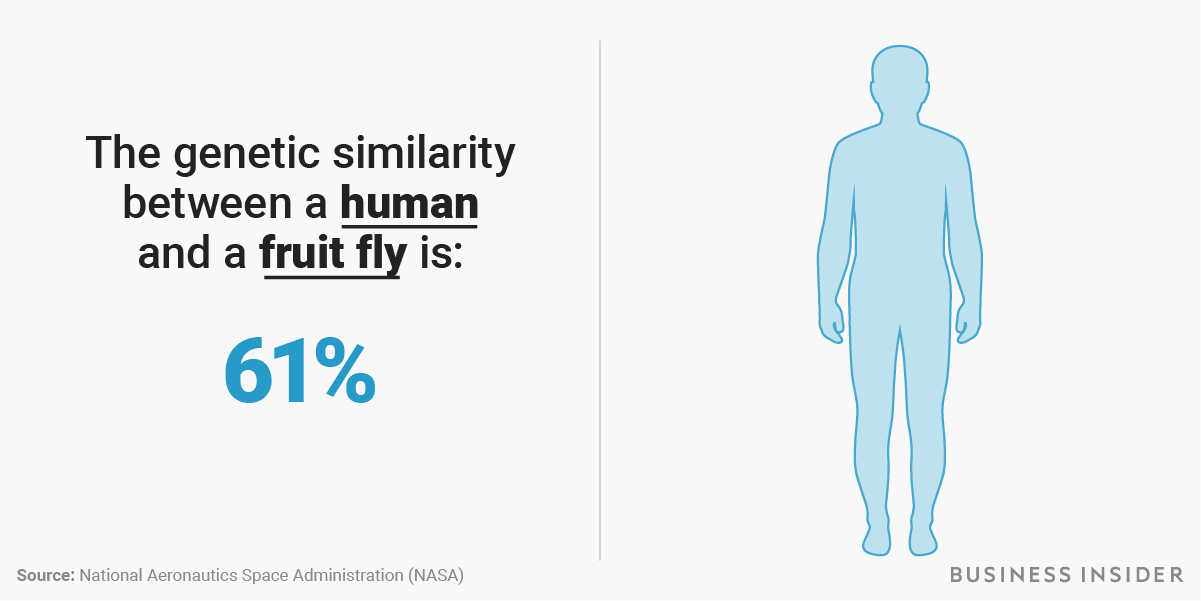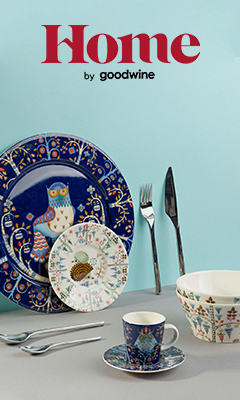What do humans share 60% of their DNA with?

What shares 60% of the same DNA as humans
Banana: more than 60 percent identical
Many of the “housekeeping” genes that are necessary for basic cellular function, such as for replicating DNA, controlling the cell cycle, and helping cells divide are shared between many plants (including bananas) and animals.
What do we share 90% of our DNA with
feline
Our feline friends share 90% of homologous genes with us, with dogs it is 82%, 80% with cows, 69% with rats and 67% with mice [1]. Human and chimpanzee DNA is so similar because the two species are so closely related. They both descended from a single ancestor species 6 or 7,000,000 years ago.
What animal do humans share 70% of their DNA with
slugs
It's probably not that surprising to learn that humans share 98% of our DNA with chimpanzees–but incredibly, we also share 70% with slugs and 50% with bananas.
What do humans share 50 of their DNA with
We do in fact share about 50% of our genes with plants – including bananas.” “Bananas have 44.1% of genetic makeup in common with humans.”
Do we share DNA with lettuce
We know the genetic difference between sexes is around one in 20,000. We know chimps and bonobos share 99% of our genes. More startling is an even newer discovery: we share 99% of our DNA with lettuce.
How much DNA do we share with dogs
Humans and dogs share 84 percent of their DNA, which again, makes them useful animals to study human disease processes.
What is the other 98% of DNA used for
The mysterious majority – as much as 98 percent – of our DNA do not code for proteins. Much of this “dark matter genome” is thought to be nonfunctional evolutionary leftovers that are just along for the ride.
What does the other 98% of DNA do
It takes just 2 percent of the human genome to code for all of the proteins that make cellular functions — from producing energy to repairing tissues — possible. So what does the other 98 percent do A large portion of this so-called noncoding DNA controls the expression of genes, switching them on and off.
What animals share 99% DNA with humans
Ever since researchers sequenced the chimp genome in 2005, they have known that humans share about 99% of our DNA with chimpanzees, making them our closest living relatives.
Do humans share 99 DNA with lettuce
We know the genetic difference between sexes is around one in 20,000. We know chimps and bonobos share 99% of our genes. More startling is an even newer discovery: we share 99% of our DNA with lettuce.
Who do you share 25% of your DNA with
grandparents and grandchildren
You share around 50% of your DNA with your parents and children, 25% with your grandparents and grandchildren, and 12.5% with your cousins, uncles, aunts, nephews, and nieces. A match of 3% or more can be helpful for your genealogical research — but sometimes even less.
Do we share 50% DNA with trees
How much DNA do we share with plants and insects We also share a shocking amount of DNA with plants and insects. We share 50% of our DNA with trees, 70% with slugs (gross), 44% with honey bees, and even 25% with daffodils.
Do we share DNA with strawberries
Every living thing has DNA — or deoxyribonucleic acid – which is a blueprint of what makes you a human, your dog an animal or your roses a type of flower. You may be surprised to learn that 60 percent of the DNA present in strawberries is also present in humans.
Do we share DNA with grapes
Humans share DNA with thousands of living things, from bananas to worms to yeast. This is because all plants, animals and fungi evolved from a common ancestor more than 1.5 billion years ago. So, humans share 24% of their genes with grapes, 24% with rice, 38% with roundworms and 44% with honey bees.
Do humans share DNA with trees
We also share a shocking amount of DNA with plants and insects. Plants and Insects We share around 60% of our DNA with bananas, 50% of our DNA with trees, 70% of with slugs (gross), 44% with honey bees, and even 25% with daffodils.
Can you share 100% DNA
Identical twins are the only siblings that share 100% of their DNA. Non-identical brothers and sisters share about 50% of inherited gene variants, which is why siblings and fraternal twins can be so different.
Is it true that 99% of the DNA in all humans is different only 1% is exactly the same
The DNA of any two people on Earth is 99.6 percent identical. But 0.4 percent variation represents about 12 million base pairs, which can explain many of the differences between individuals, especially if the changes lie in key genes.
Is 98% of our DNA junk
Our genetic manual holds the instructions for the proteins that make up and power our bodies. But less than 2 percent of our DNA actually codes for them. The rest — 98.5 percent of DNA sequences — is so-called “junk DNA” that scientists long thought useless.
Who do you share 11% DNA with
You share around 50% of your DNA with your parents and children, 25% with your grandparents and grandchildren, and 12.5% with your cousins, uncles, aunts, nephews, and nieces. A match of 3% or more can be helpful for your genealogical research — but sometimes even less.
Is a banana 99% genetically similar to a human
In these parts, if we only look at the specific changes in the gene sequence, the genes are 98.77% identical. If the different fragments are included, a similarity of 96% was estimated, although this figure is disputed. If we look at the sequence of the proteins we share, only 29% of them are completely identical.
Do humans share DNA with strawberries
You may be surprised to learn that 60 percent of the DNA present in strawberries is also present in humans.
What does a 17% DNA match mean
If you and a relative were to share 17% of your DNA, for example, there would be some probability that the relative is your aunt, your niece, your grandmother, your grandchild, your half sister, or even your first cousin.
Can siblings share 70% DNA
Siblings share only half of their DNA
Only half of a parent's genes are passed on to each child, and siblings (except identical twins) don't inherit the exact same half. This means your siblings received some genes you didn't, and vice versa. You and your siblings share about 50% of your DNA with each other.
Why do I only share 50% DNA with my sister
Because of recombination, siblings only share about 50 percent of the same DNA, on average, Dennis says. So while biological siblings have the same family tree, their genetic code might be different in at least one of the areas looked at in a given test. That's true even for fraternal twins.
Do we share DNA with apples
As a result humans share about 40% of our DNA with apples. As a side note the DNA of all humans is about 98.5% identical with that 1.5% difference making up all the different variations we see in people.



0 Comments